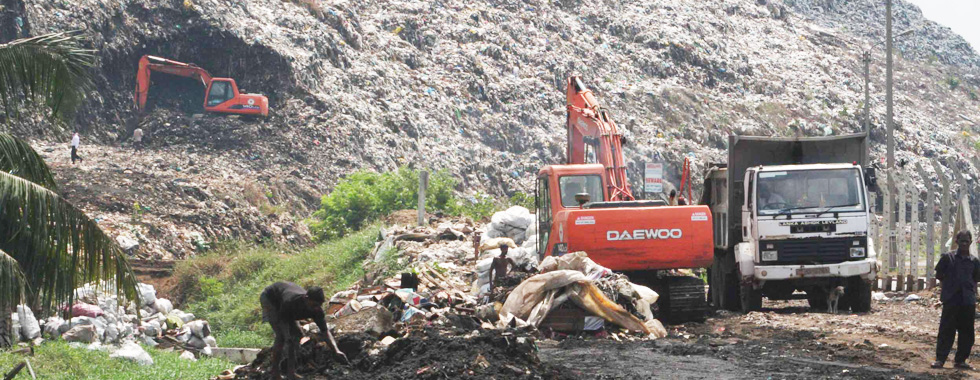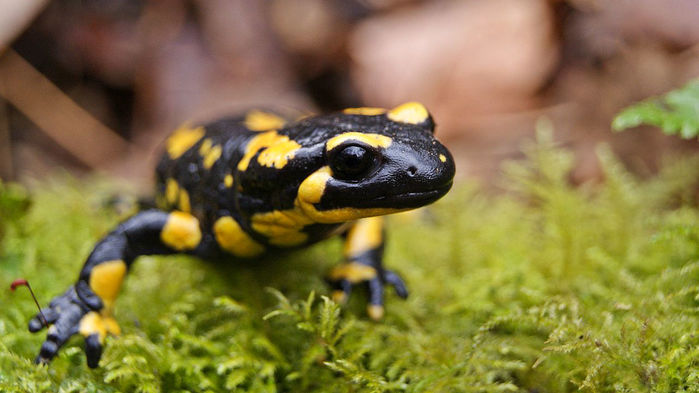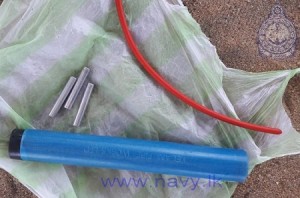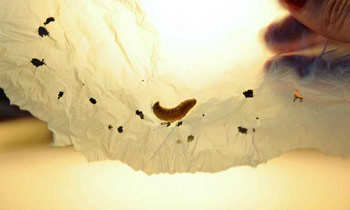
How San Francisco is Becoming A Zero Waste City
San Francisco has deployed its widely successful solid waste management programme based on the ambitious goal of zero waste by 2020. To ensure that no material goes to landfill or high temperature destruction, the city’s zero waste goal means that products are designed and used according to the principle of highest and best use. Zero Waste also means that discarded materials follow the waste reduction hierarchy: reduce, reuse, and then recycle or compost.
To meet its zero waste goal, San Francisco has used a three-pronged approach that addresses the legal, administrative, and social challenges of waste management reform. Specifically, the City enacted strong waste reduction policies; partnered with Recology, a like-minded materials management company, to innovate new programmes; and created a culture of recycling and composting.
http://www.c40.org/profiles/2013-sanfran

A deadly salamander disease just got a lot scarier
 Europe’s largest and best known salamander species, the fire salamander, is falling victim to a deadly fungus, and new research is making scientists more pessimistic about its future. A 2-year study of a population in Belgium, now entirely wiped out, has revealed that these amphibians can’t develop immunity to the fungus, as was hoped. To make matters worse, it turns out the fungus creates a hardy spore that can survive in water for months and also stick to birds’ feet, offering a way for it to spread rapidly across the continent. Two other kinds of amphibians, both resistant to the disease, also act as carriers for the highly infectious spores.
Europe’s largest and best known salamander species, the fire salamander, is falling victim to a deadly fungus, and new research is making scientists more pessimistic about its future. A 2-year study of a population in Belgium, now entirely wiped out, has revealed that these amphibians can’t develop immunity to the fungus, as was hoped. To make matters worse, it turns out the fungus creates a hardy spore that can survive in water for months and also stick to birds’ feet, offering a way for it to spread rapidly across the continent. Two other kinds of amphibians, both resistant to the disease, also act as carriers for the highly infectious spores.
“This is terrible news,” says geneticist Matthew Fisher of Imperial College London, who studies the fungus but was not involved in the new research. “This isn’t a problem that’s going to go away. It’s a problem that’s going to get worse.”
The pathogen, Batrachochytrium salamandrivorans (Bsal), is a chytrid fungus, a type that lives in damp or wet environments and typically consumes dead organic matter. Bsal infects and eats the skin of salamanders, causing lesions, apathy, loss of appetite, and eventually death. Over the past few decades, a related fungus, B. dendrobatidis (Bd), has struck hard at amphibian populations around the world, particularly in the Americas, Australia, Spain, and Portugal. More than 200 species of frogs and toads are thought to have gone extinct, including many kinds of Costa Rica’s striking stream-breeding toads.
http://www.sciencemag.org/news/2017/04/deadly-salamander-disease-just-got-lot-scarier

Six persons held for engaging dynamite fishing
Six local fishermen who were engaging in illegal fishing practices using dynamite in the sea area off Kuchchaveli arrested by Navy personnel yesterday, Navy said.
Along with the suspects, a dinghy, 2 unauthorized fishing nets, a pair of diving fins, a diving mask, 3 non electric detonators and 100 g of water gel were also taken into naval custody. The suspects, dinghy and other fishing gears were handed over to the Kuchchaveli Police for further investigations.
Source – 24/04/2017, Times Online, See more at – http://www.sundaytimes.lk/article/1020532/six-persons-held-for-engaging-dynamite-fishing

Hungry caterpillar Joins fight against plastic pollution
A moth caterpillar commonly bred to provide fish bait feasts on a notoriously resistant plastic, scientists reported Monday, raising hopes the creature can help manage the global problem of plastic-bag pollution.
“This discovery could be an important tool for helping to get rid of the polyethylene plastic waste accumulated in landfill sites and oceans,” said Cambridge University professor Paolo Bombelli, co-author of a study published in the journal Current Biology.
Polyethylene represents 40 percent of Europe’s demand for plastic products, mostly in the form of packaging and shopping bags. Taking many years to biodegrade, these objects constitute a serious hazard for the environment, especially for sea life, when they are not recycled.
In the European Union, 38 percent of plastic is thrown out in landfills. The promising discovery centers on the wax worm — the name for the caterpillar larva of Galleria mellonella, or greater wax moth. In its pre-caterpillar form, the species is commercially raised as maggots to provide fish bait and aquarium food.
The moth is also a scourge of apiculture, laying its eggs in the precious honeycomb of beehives. The find happened by accident at the home of the study’s lead author, Federica Bertocchini, a biologist at the Institute of Biomedicine and Biotechnology of Cantabria in Spain. Bertocchini keeps beehives as a hobby.
“When I went to clean them for reuse in the spring, they were infested with (wax) worms,” the researcher told AFP. “So I put them in a bag.
Then, after a while, I saw the bag was full of holes and these caterpillars were crawling all around my place.” Startled by the caterpillar’s voracious appetite, Bertocchini and a team from Cambridge University decided to conduct experiments to find out just how much, and how quickly, the pests could consume environmentally harmful plastic. They placed hundreds of the small, yellowish creatures on top of a supermarket plastic bag.
Within 40 minutes, holes began to form. Twelve hours later, the caterpillars had consumed 92 milligrammes (0.003 of an ounce) of the stuff, far swifter than fungus and bacteria would have taken.
In their next test, the biologists confirmed that the larvae fully digest a plastic meal, breaking down its chemical components. Covering a plastic bag with mashed-up caterpillars produced a similar results, suggesting that an enzyme or some other compound was at work. “
The caterpillar produces something that breaks the chemical bond, perhaps in its salivary glands or a symbiotic bacteria in its gut,” Bertocchini said. The answer may lay in the worm’s habitat and eating habits. Growing in bee colonies, the moth larvae feed on beeswax, a digestive process that scientists believe may be similar to breaking down polyethylene. “Wax is a polymer, a sort of ‘natural plastic,’ and has a chemical structure not dissimilar to polyethylene,” Bertocchini suggested.
It remains unclear if a single enzyme or a combination of molecules are responsible for degrading plastic. But biologists hope to identify and reproduce the active agent artificially. “Using million of caterpillars on top of plastic bags would not be feasible,” Bertocchini said.
Manufactured on a large scale, the plastic-degrading substance would, in theory, take the form of an environmentally harmless liquid that could be used in plastic treatment facilities. (NDTV)
Source – 25/04/2017,Dailymirror- See more at: http://www.dailymirror.lk/article/Hungry-caterpillar-Joins-fight-against-plastic-pollution-127738.html#sthash.ZyO2g25o.dpuf





